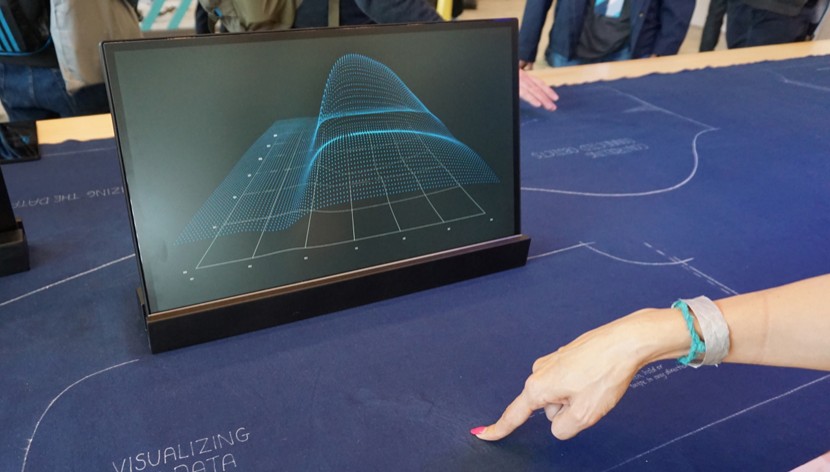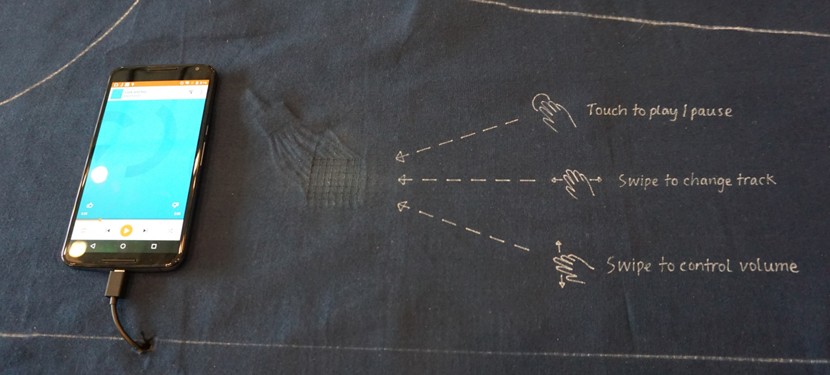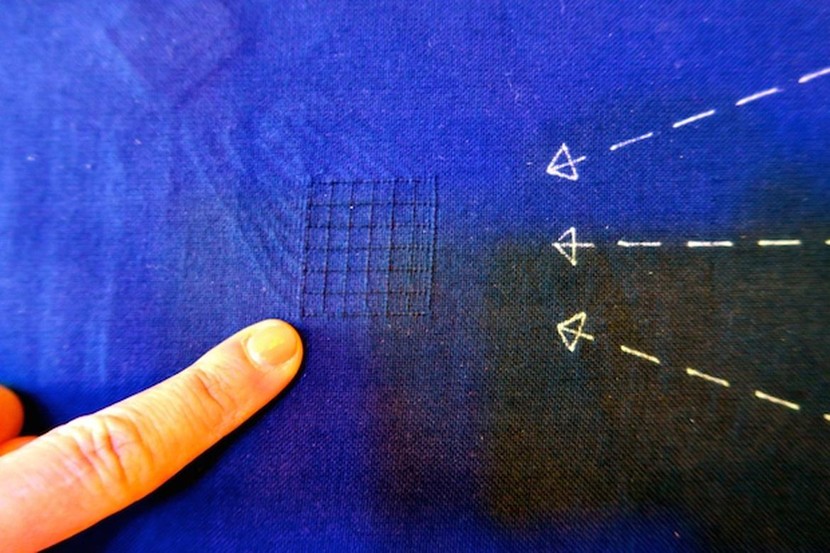What with the vast new technological frontiers opening up to us seemingly on a daily basis, it should come as no surprise that some of the industry's biggest players have been looking into ideas that, until recently, would have been seen as frankly preposterous. One such idea is that of smart textile design, a concept which could effectively transform our everyday clothing into touch-sensitive panels used to control everything from our smartphones to our televisions. Google has become the latest firm to experiment with this cutting-edge tech in the form of the flamboyantly named Project Jacquard, which was revealed at the Google I/O developer conference in San Francisco last week.
Project Jacquard explores the potential of integrating conductive threads into textiles so that they can recognise simple gestures and convert them into computer signals

Devised by Google's Advanced Technology and Progress (ATAP) department, Project Jacquard explores the potential of integrating conductive threads into textiles so that they can recognise simple gestures and convert them into computer signals. The exact science behind it is far beyond my understanding, but from what I gather as a layman, the technology works by weaving special conductive threads into the fabric of a garment. When touched, these conductive threads send signals to a computer that translates the motions of the user into controls, allowing certain areas of said garment to be used as a smart interface. The interactive cloth was developed by Google in partnership with Levi, who will be the first company to use it in their designs, as they develop the world's first pair of smart-jeans.
The technology was devised by Google's Advanced Technology and Progress (ATAP) department and designed alongside Levi (and jeans fame)

Project founder Ivan Poupyrev, explained how the technology behind Project Jacquard might not be quite as complicated as you'd think. He explained that “The structure of textiles is the same as the structure of touch screens that we use every day on mobile devices and tablets. That means that if you replace some of the threads in textiles with conductive threads, you should be able to weave a textile which can recognise a variety of simple touch gestures.” Sounds simple right? Of course, there's a limit to what the technology could realistically achieve, so (for the time being at least) it will be used for simple processes like unlocking phones, answering calls or scrolling through websites. “Software design and fashion design often don't exist together in the same place,” explained design lead Carsten Schwesig. “We're hoping to make it very simple for each of these parties to collaborate.”
Welcome to Project Jacquard
The surprisingly cost-effective “Smart yarn” is created by replacing strands of thread with thin metal wires or conductive polymers. The yarn used by the team is highly conductive as well as scalable, so it can be used in industrial weaving machines around the world, which effectively means that we could all be wearing affordable “Smart-jeans” in the next few years. The material looks almost exactly like normal yarn, and can be woven to create a textured surface or integrated so it is practically invisible. Different variations and colours will also allow designers to experiment with numerous textures and patterns, so we won't have to be limited to bland designs just because we want to be on the cutting-edge.
The surprisingly cost-effective “Smart yarn” is created by replacing strands of thread with thin metal wires or conductive polymers

Of course, smart textiles are not simply a means through which to answer your phone by wiping a finger across your sleeve, but could completely revolutionise the fashion industry, with developments being made which could eventually allow users to download new colours and patterns to their garments instead of buying new ones. According to the project's lead researcher, Nan-Wei Gong, the team are already close to shrinking down “All the components to the size of a button,” so that ultimately “It will be something that's so small we can embed them into the manufacturing process.” So does this mean smart textile design could come as standard in the near future? Perhaps.
Fashion designer Pauline van Dongen has created a collection of clothing that incorporate solar panels and LED lighting

Google are not the only ones experimenting with the technology either. Musician Imogen Heap has also been experimenting with integrating gesture control into garments with her Mi.Mu Gloves that turn movements into music, while fashion designer Pauline van Dongen has created a collection of clothing that incorporate solar panels and LED lighting. In short, it appears as if the world's of fashion and tech are closer than ever before, and that gulf will only continue to close as we begin to realise that, as Poupyrev himself has said, considering the vast leaps we've made this century, “It’s ridiculous that our clothes don’t already talk to our tech.” The idea is to close the circuit by taking out the middle-man between us and our beloved devices, and I've never been a fan of middle-men.

Benjamin Hiorns is a freelance writer and struggling musician from Kidderminster in the UK.






